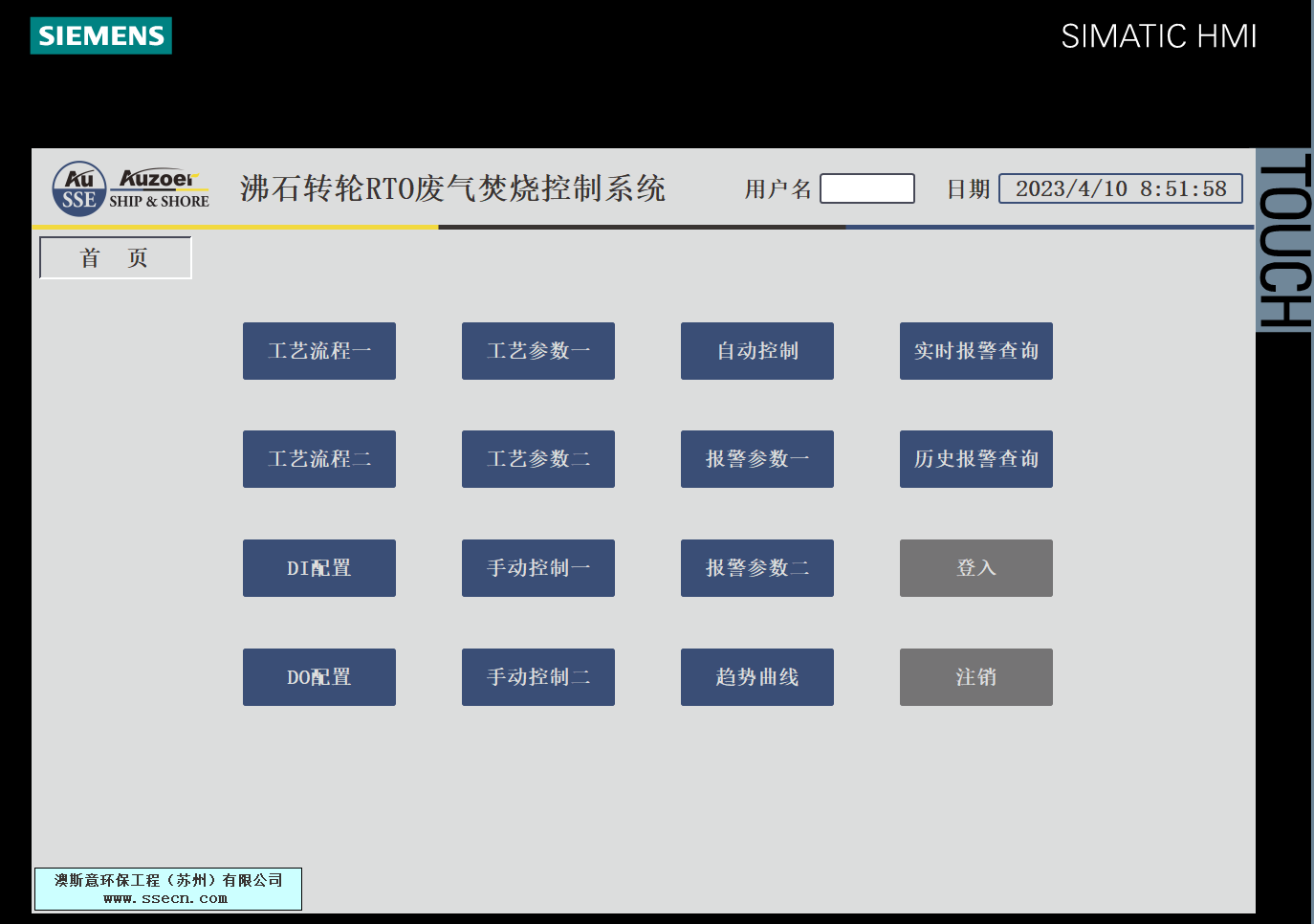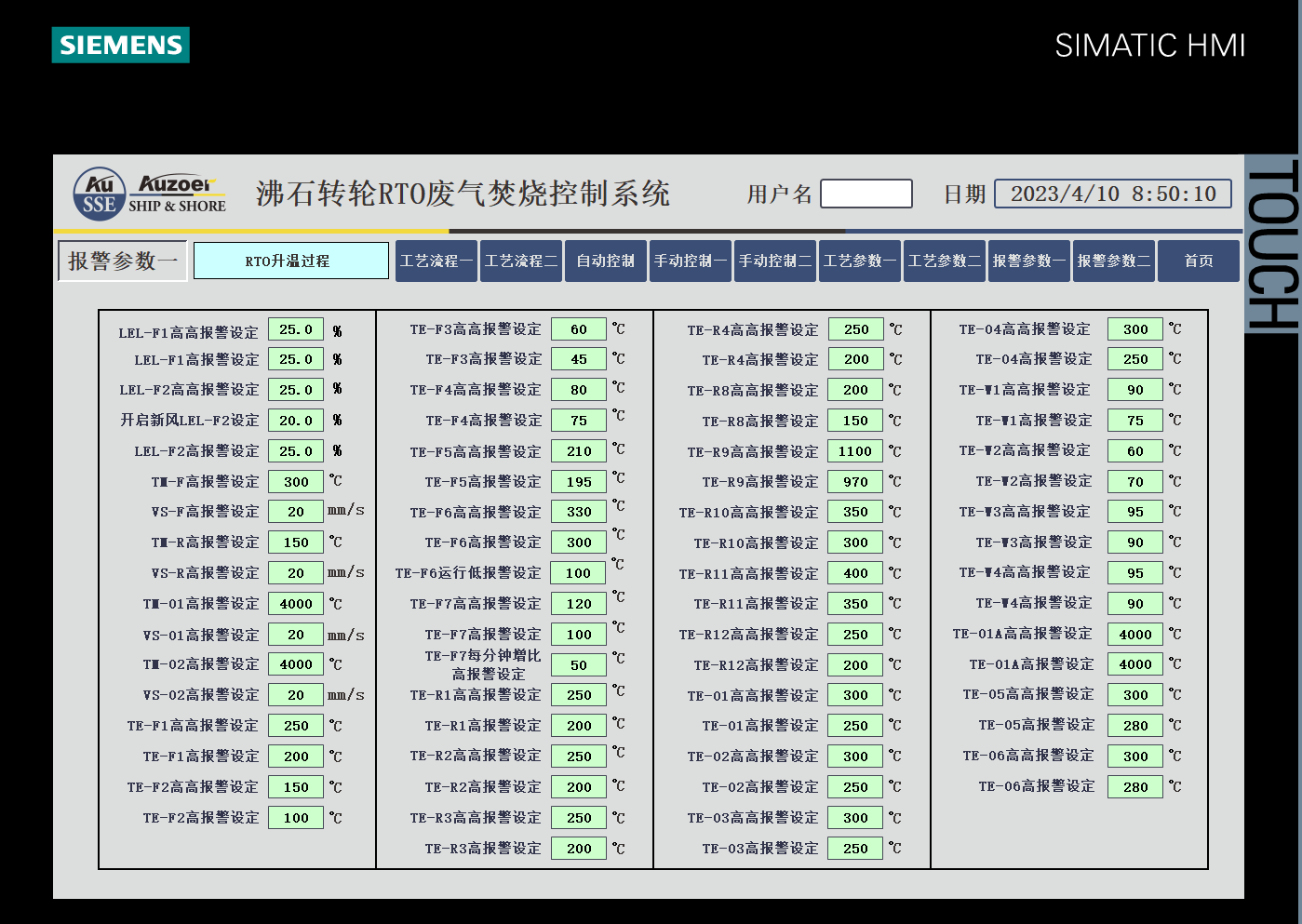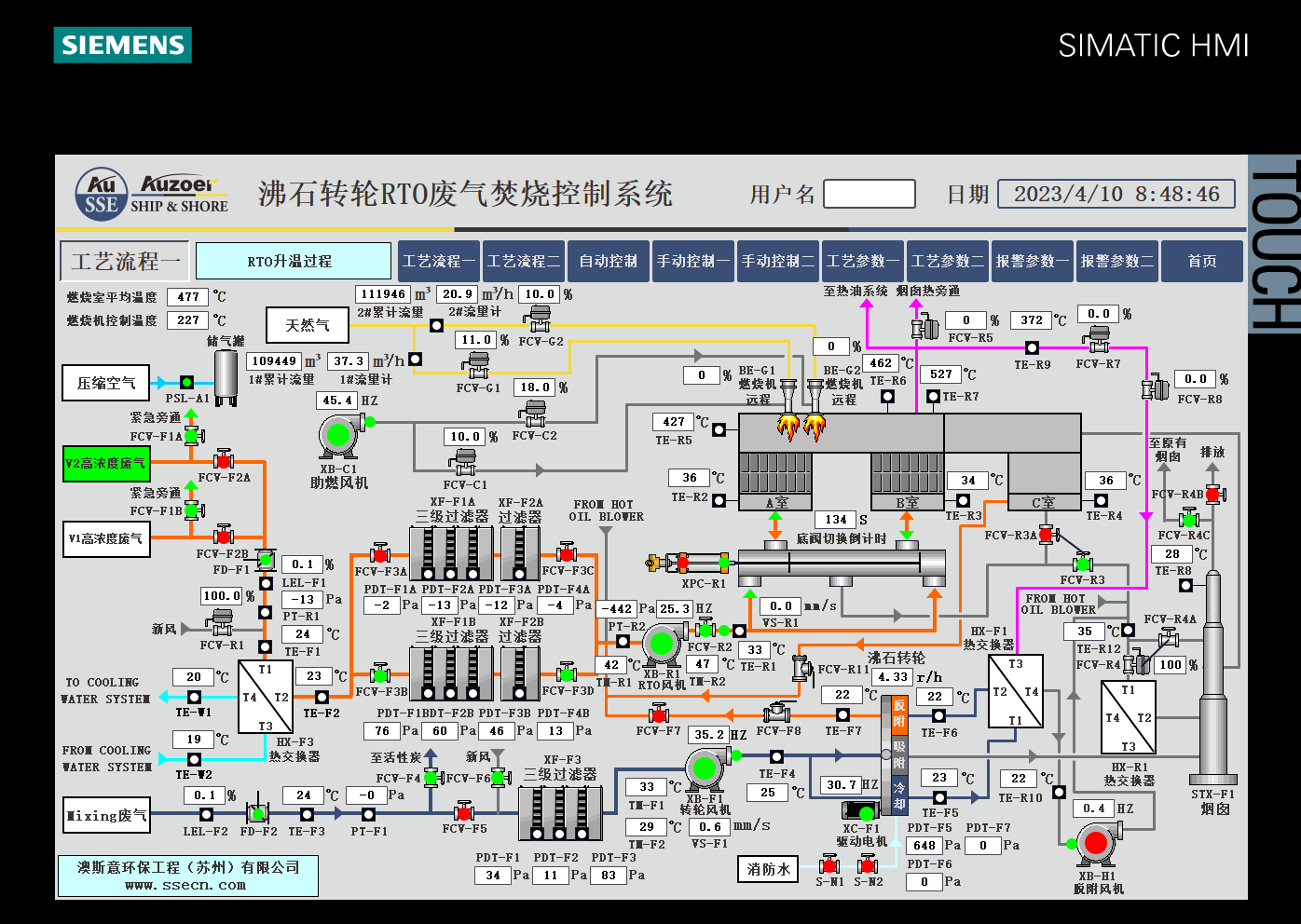RTO is a complex system, PLC, control module, temperature, pressure, flow, differential pressure, analytical instrument, intelligent valve and other sensor equipment and other equipment constitute a complete intelligent system. These devices need to be reliable enough for our RTO to operate continuously and stably. If a failure occurs during operation, we need to check the RTO one by one according to the process. Ausi has 14 years of historical experience in the RTO industry. The following is to sort out the faults encountered in the operation process for everyone to communicate and use.
Display screen picture
Equipment failure generally refers to the event or phenomenon in which the equipment loses or reduces its prescribed function, which is manifested as the abnormal production and operation of the equipment. It refers to the loss of the original accuracy or performance of some parts of the equipment, so that the equipment cannot run normally and the technical performance is reduced, resulting in the interruption of production or the reduction of efficiency and affecting production. Strengthen the maintenance of equipment, grasp the wear of parts in time, before the parts enter the severe wear stage, repair and replace, can prevent the economic loss caused by failure.
In the electrical field, there may be various faults in electrical equipment. As equipment manufacturers and debugging personnel, we should accurately and quickly determine the point of the problem and solve the problem. Take the RTO site as an example and share with you the troubleshooting of electrical faults.
01 Fault investigation
After a problem occurs in the field, we should ask the operator about the condition of the equipment before and after the failure, which is conducive to us to analyze the reasons for the failure of the equipment. The RTO will configure the touch screen or the host computer, and the operator can view the prompt description of the fault in the "alarm display" interface.
Figure: Alarm display interface
In general, we can determine the fault point according to the alarm description in the "alarm display" interface, but we also need to ask the operator whether the fault occurs before and after RTO operation or during RTO operation. If the fault occurs during RTO operation, we need to confirm that the system mode is in "standby mode" or "exhaust mode".
If the car has been stopped, it is necessary to confirm whether it is stopped manually after the operator finds the fault or the system automatically stops. The downtime of the RTO system during operation is divided into the abnormal alarm shutdown of the analog signal acquisition value and the shutdown of the field equipment hardware failure.
Abnormal acquisition value of analog signal: the temperature is too high or too low during RTO operation, the concentration value detected by the concentration detector is too high, and the pressure value detected by the pressure detector is too low.
Equipment hardware fault: fan, water pump fault, empty fuse fault, etc.
02 Troubleshooting
① The solution of abnormal acquisition value of analog signal
First of all, whether the instrument is faulty should be judged, and the calibration instrument or instrument should be selected according to the situation.
Secondly, confirm whether the on-site production process has changed according to the process flow. If the on-site production process has changed, the RTO operation parameters need to be modified according to the process conditions. If the on-site process conditions have not changed, the pressure and temperature in the RTO should be checked and judged whether there is blockage combined with the "curve record" interface in the display interface.
Figure: RTO running state interface
Figure: Temperature curve display interface
② Equipment hardware failure
According to the alarm description, check whether the fuse in the cabinet is fused, whether the air open trips, whether the other electrical components are burned out, heated or broken, whether the wire connection screws are loose, whether the motor speed is normal, and whether the sound of the motor, transformer and some electrical components is normal. After cutting off the power supply, touch the coil temperature of the motor, transformer and electrical components by hand to see if there is a significant rise.
03Power on and start confirmation
After the fault is solved, the overall process of RTO should be checked and confirmed to confirm whether the start-up process is normal, whether the fan, water pump and other electrical components are abnormal, and the equipment can only be turned on after everything is normal. After the operation of the equipment, observe the operation of the equipment to ensure that the fault has been resolved.
The above is to share the technology of electrical fault diagnosis with RTO as an example. If you encounter electrical fault in your work, please leave a message to share. We can exchange technical information to help solve and make progress together.




